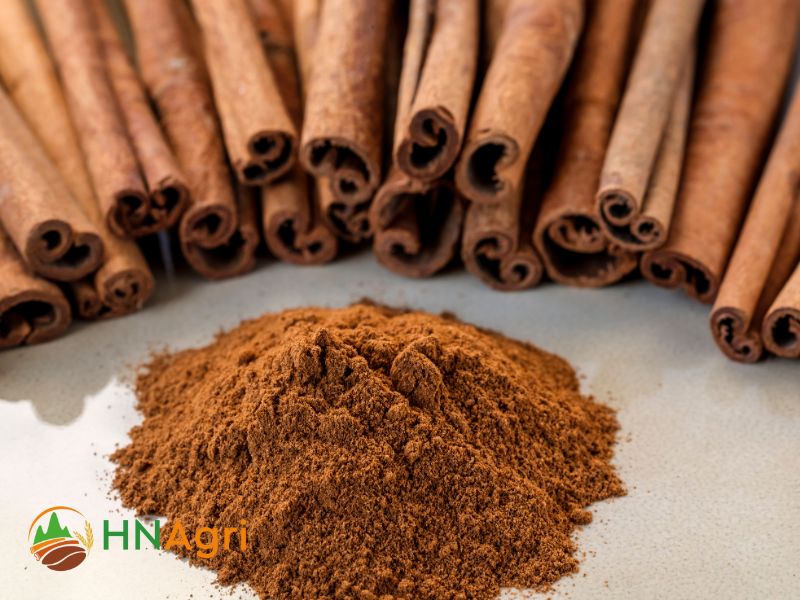The Magic of Cinnamon Sticks Aromatic Delights for the Senses
Immerse yourself in the captivating world of cinnamon sticks. Join us as we explore their aromatic wonders and uncover the delightful experiences they offer for your senses.
Contents
Introduction to the Wonderful World of Cinnamon Sticks
Now let’s have a look at the historical significance and aroma of cinnamon sticks that you should know.
Unraveling the Historical Significance of Cinnamon Sticks
Cinnamon sticks have a long history of significance. They were highly valued in ancient Egypt and became a sought-after spice along ancient trade routes like the Silk Road.
In medieval Europe, cinnamon represented wealth and status. It played a role in driving the Age of Exploration, as European explorers sought new trade routes to acquire valuable spices.
European colonial powers established plantations in cinnamon-producing regions. Cinnamon is used in cooking and traditional medicine worldwide, continuing its historical importance today.
The Science behind the Alluring Aroma of Cinnamon Sticks
The alluring aroma of cinnamon stick is a result of the complex chemical composition of the spice. Cinnamon contains several volatile compounds that contribute to its distinctive scent. Here’s a glimpse into the science behind the aroma of cinnamon sticks:
- Cinnamaldehyde: The primary compound responsible for the characteristic aroma of cinnamon is cinnamaldehyde. It constitutes a significant portion of the spice’s essential oil. Cinnamaldehyde has a sweet and spicy scent, imparting the familiar fragrance associated with cinnamon.
- Eugenol: Another important compound found in cinnamon is eugenol. It is also present in other aromatic spices like cloves. Eugenol contributes to the warm and slightly pungent aroma of cinnamon, adding complexity to its fragrance.
- Linalool: Linalool is a naturally occurring terpene alcohol found in many plants, including cinnamon. It has a floral scent with hints of spiciness. Linalool contributes to the overall fragrance profile of cinnamon and enhances its appeal.
- Coumarin: Coumarin is a compound found in cinnamon that provides a sweet, hay-like scent. However, it’s important to note that coumarin is also associated with potential health risks when consumed in large amounts. Ceylon cinnamon (Cinnamomum verum) contains much lower levels of coumarin compared to Cassia cinnamon (Cinnamomum cassia), which is more commonly available.
When cinnamon sticks are used in cooking or heated, these volatile compounds are released into the surrounding environment, creating the captivating aroma that is widely loved. The exact combination and concentration of these compounds can vary depending on the type of cinnamon and the processing methods used.
Beyond its pleasing scent, cinnamon has also been studied for its potential health benefits, including antioxidant and anti-inflammatory properties. However, it’s important to consume cinnamon in moderation as part of a balanced diet, as excessive intake may have adverse effects.

The Science behind the Alluring Aroma of Cinnamon Sticks
How to choose the organic cinnamon sticks
Here’s a summary of the guidelines for choosing organic cinnamon sticks:
- Look for certified organic labeling to ensure the cinnamon stick have been grown and processed according to organic standards.
- Read the ingredient list to ensure there are no additional additives or preservatives.
- Identify the cinnamon variety you prefer, such as Ceylon cinnamon (milder flavor) or Cassia cinnamon (stronger flavor).
- Source from reputable brands or suppliers known for their commitment to organic products and transparent sourcing practices.
- Consider purchasing whole cinnamon stick for better freshness and flavor retention.
- Look for organic cinnamon sticks in health food stores, specialty spice shops, or reputable online retailers that offer a wider selection of organic spices.
By following these guidelines, you can choose high-quality organic cinnamon sticks that meet your preferences and values.

How to choose the organic cinnamon sticks
How to source the suitable type of cinnamon sticks for your ne
To source the suitable type of cinnamon sticks for your needs, consider the following steps:
- Determine the Purpose: Consider the purpose for which you intend to use the cinnamon stick. Are you planning to use them for cooking, baking, or making beverages? Different recipes may call for different types of cinnamon. Ceylon cinnamon is often preferred for delicate flavors, such as in desserts, while Cassia cinnamon is commonly used in bolder, spicier dishes.
- Check Authenticity: Pay attention to the authenticity of the cinnamon you are sourcing. Ceylon cinnamon is often regarded as “true” cinnamon, while Cassia cinnamon is more widely available. Ensure that the cinnamon stick you purchase are labeled correctly and provide accurate information about the variety.
- Consider Organic and Sourcing Practices: If organic cinnamon is important to you, follow the guidelines outlined earlier to choose organic cinnamon stick. Additionally, consider the sourcing practices of the brand or supplier. Look for information on fair trade practices, sustainable sourcing, and support for local farmers, if these factors align with your values.
- Read Reviews and Recommendations: Before making a purchase, read reviews and recommendations from trusted sources, such as culinary experts, food blogs, or trusted online platforms. These sources can provide insights into the quality, flavor profile, and suitability of different cinnamon stick brands or varieties.
Understand the Different Types: Familiarize yourself with the different types of cinnamon available, primarily Ceylon cinnamon (Sri Lanka cinnamon sticks) and Cassia cinnamon (Cinnamomum cassia). Ceylon cinnamon is milder and sweeter, while Cassia cinnamon has a stronger, spicier flavor. Determine which type suits your taste preferences or specific culinary requirements. If you want to learn more about Sri Lanka cinnamon sticks, please click this link: https://hncinnamon.com/the-vast-capabilities-of-sri-lankan-cinnamon-sticks/

